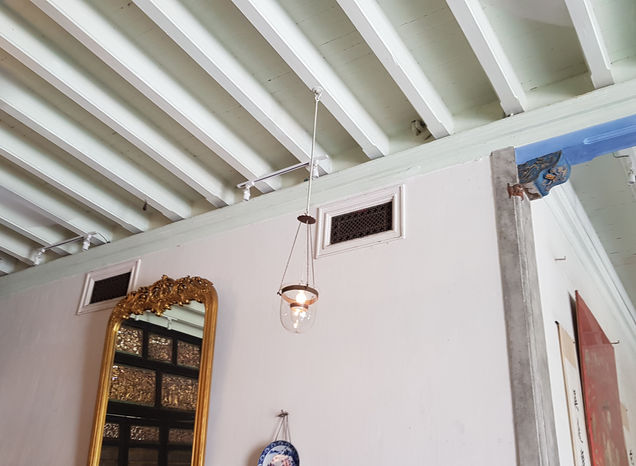
Penang Excursion
community Service Initiative
Penang Excursion
Day 1 - 18th September - Thursday
We left Taylors Lakeside Campus at around 11 and reached Penang at 4. We checked into our hotel which is the Container hotel and after we were allowed to explore by ourselves.
After, me and my group walked a few minutes to Sekeping Victoria, a cafe with accommodations for people to stay in. The style of the place was very similar to Sekeping Serendah that we went to last year. The interior was very industrial styled furnshing with non finished concrete walls.
Later, we decided to head out and explore more. We went to Penang's Little India and from there we saw many hawkers and shops selling various types of food, traditional clothing in multitude of colours and many more.
We finished the day off with dinner at Kapitan, a place best for their naan, tandoori and their specialty which is chicken milani.
Day 2 - 19th September - Friday
On the second day, we had a big tour of the town. But before, we started off with a quick breakfast at Kapitan and from there we head out o St. George's Church, where we met the tour guides. The entire class was broke of into two groups. Mr David, the tour guide of our group.
Mr David told us a brief history of Penang. He taught us of the architecture of the buildings and how to recognize when the building was built. We now know that we can tell when each of the building was built by just looking at the windows of the buildings. He also told us that the roof of the building are built in such a way because of the beliefs in Chinese culture. We visited temples, found out about the story of the Godddess of Mercy and also a few other Chinese beliefs. Like oracle stick and "JiaoBei" which is a stone that could answer Yes, No or Maybe questions.
Next we went over to Little India, where we walked the streets and listend to the history of their cultures. Mr David introduced us to a stall best for their Roti Jala and curry. He also led us to a muruku stall and the owner of the shop was kind enough to give us a few samples. I was very impressed and in awe of the many types of muruku and also sweets there were, and the fact that everything was all homemade adds to the amazement.
Later on, we went to the Malay part of the street. We saw a few person giving out food for free. Mr David told us how even though there are 4 different religion on that strip of street everyone lives in harmony with each other.
At the end of the tour we went to the Chew Jetty. Mr David told us the history of the Jetty and how it evolves trough time. We finished the tour with a group picture.
After the tour, we had lunch at Sekeping Victoria. Then we decided to go to the Blue Mansion. We paid RM17 for each person to go on the tour. After the Blue Mansion tour we head out back to Armenian Street for more sightseeing. There were alot of famous street art along the walls of Armenian street. We stumbled upon a shop that sells cendol and coconut shake. So we decided to take a break there. Then after we walked about some more and when we were satisfied with our findings we went back to our hotel to present our findings.



Some of the art, murals and paintings in the streets
Day 3 - 20th September - Saturday
On the last day, we had our breakfast and did some walking around the area of our hotel as we had to check out soon.
We checked out of the hotel at around 12pm and started our journey back to Taylors Lakeside campus.
MY FINDINGS


ERHU
Erhu is is a two-stringed bowed musical instrument, more specifically a spike fiddle, which may also be called a Southern Fiddle, and sometimes known in the Western world as the Chinese violin or a Chinese two-stringed fiddle.
POTTERY
Chinese ceramics show a continuous development since pre-dynastic times and are one of the most significant forms of Chinese art and ceramics globally. The first pottery was made during the Palaeolithic era. Chinese ceramics range from construction materials such as bricks and tiles, to hand-built pottery vessels fired in bonfires or kilns, to the sophisticated
Chinese porcelain wares made for the imperial court and for export. Porcelain was a Chinese invention and is so identified with China that it is still called "china" in everyday English usage.

BLACKSMITH
(Tukang Besi)
During the tour. I passed this blacksmith and felt amazed when i saw the gigantic anchors that they made.
A blacksmith is a metalsmith who creates objects from wrought iron or steel by forging the metal, using tools to hammer, bend, and cut.












































